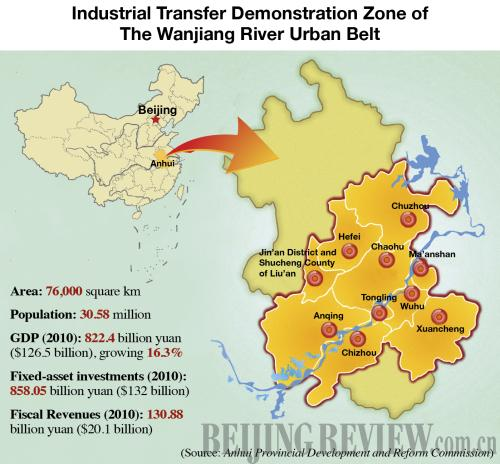In the heart of China, small cities see big changes
On the banks of the lower Yangtze River, fertile farmland spread out for miles with rows upon rows of cabbage, grain and various fruits as far as the eye can see. Over some rows, tented greenhouses shield what's inside. The fields were already green when I arrived in the last week of February, the tail end of winter there. Small ponds and streams dotted the landscape, breaking up the land, collecting both wild ducks and people's garbage. Simple two-story houses — farmers' homes — are also scattered here and there, always in clusters. Among them are smaller, older, crumbling shacks, serving as reminders of the poverty that still lingers.
Anhui Province straddles the river here, broken in two as the Yangtze winds its way northeast toward Shanghai and the East China Sea, providing easy access to the ocean. The province's south-central location has made it a gateway between north and south, east and west for centuries. It is just a few hours from several regional hubs, including Nanjing and Shanghai to the east, and Beijing to the north.
As strategic as its location is, China's development boom never took off in Anhui as much as it did along the eastern coastline. The province has largely been an agricultural powerhouse, capable of producing 30 million tons of grain every year, thanks to the Yangtze and Huai rivers and mild climate. The province, which has roughly 68 million people, leads the nation in output of grain, cotton, tea, tobacco, vegetable and fruit.
But all of that is changing. The central government approved last year a major plan to relocate industries in its coastal cities further inland, where resources are still abundant and labor is cheaper, freeing up the eastern cities so they can develop high-end service economies. Under the plan for the Wanjiang Economic Zone, which alternately goes by clunky names such as "Industrial Transfer Demonstration Zone in Anhui Yangtze River City Belt," 10 of Anhui's 17 cities will use a mix of "favorable policies" to attract both domestic and foreign investors to open, relocate or expand their companies there. Another two industrial transfer zones directly administered by the provincial government are also in the works and will eventually become cities themselves. The result is a government-induced, massive transformation of a region that will produce ripple effects across the country.
Many of these plans, only hatched up in earnest little more than a year ago, are already under way. Acres of farmland and wasteland have been cleared to make way for new construction. Wide, empty roads in the middle of nowhere seemingly lead to nothing but dirt and more dirt. Sometimes, there will be a factory being built, and sometimes, another factory that has even begun production. (The establishments of some companies in the region even precede the official endorsement of the industrial transfer zone, but fit right in with local government plans and are generously included.) To understand the true meaning of development — and a developing China — Anhui right now is a good place to start.
 0
0 







